Atlantic Beach, NC (August 2024)
diving aboard Atlantis IV
Ario and Aeolus
 |
Ario and Aeolus
Proteus (sunk August 19, 1918 in collision)
USS Tarpon (SS-175, foundered under tow August 26, 1957)
Dixie Arrow (sunk March 26, 1942 by U-71)
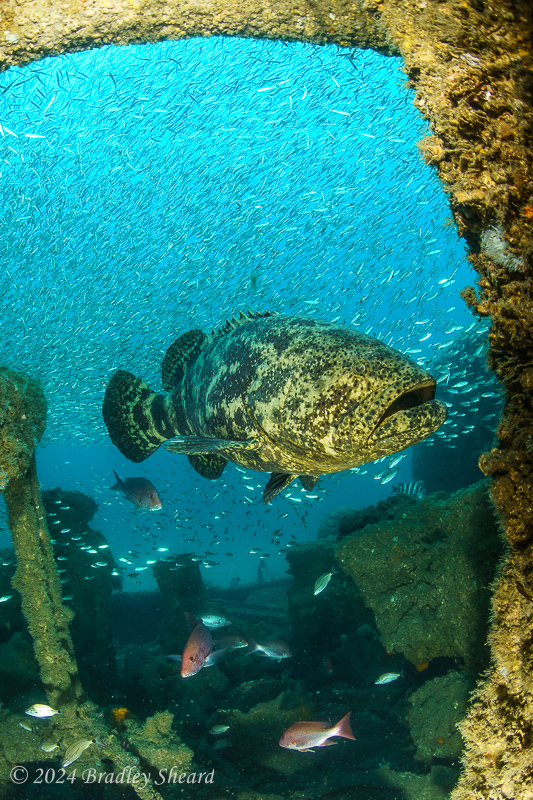 |
 |
| The Dixie Arrow is also an old friend now. A World War II tanker torpedoed during the war, her remains have been steadily deteriorating over the years, and she is largely flattened except for the extreme stern and bow, which stand fairly high above the bottom. Beneath the engine was another goliath grouper on this dive, and he was reasonably "friendly" allowing a close approach and some nice closeup photos, even though I was shooting with a 15mm fisheye lens. I kept hearing voices as I was photographing the grouper, causing me to look around for their source, to no avail. After surfacing, I discovered that Mike Powell and Dave Etchison had been quite close, just on the other side of the ship's boilers, and had been shouting to each other through their rebreathers as they had a close encounter with a great white shark!! | |
Manuela (sunk June 25, 1942 by U-404)
Catherine Monahan
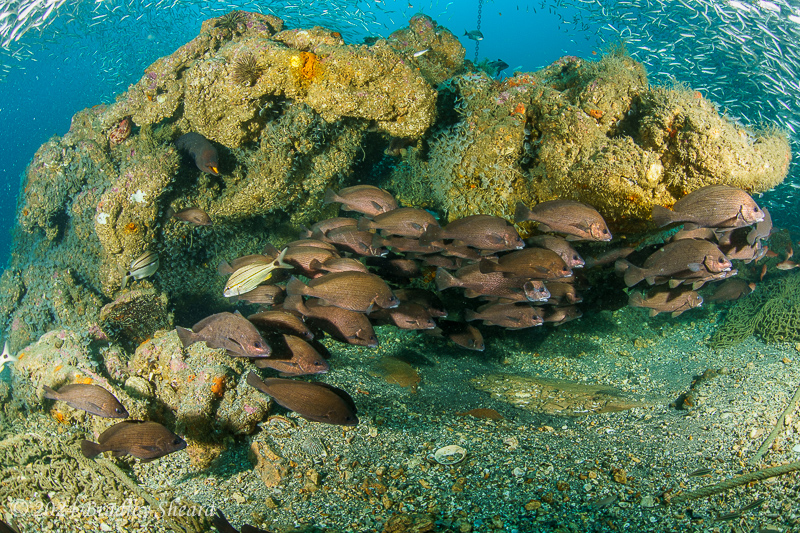 | 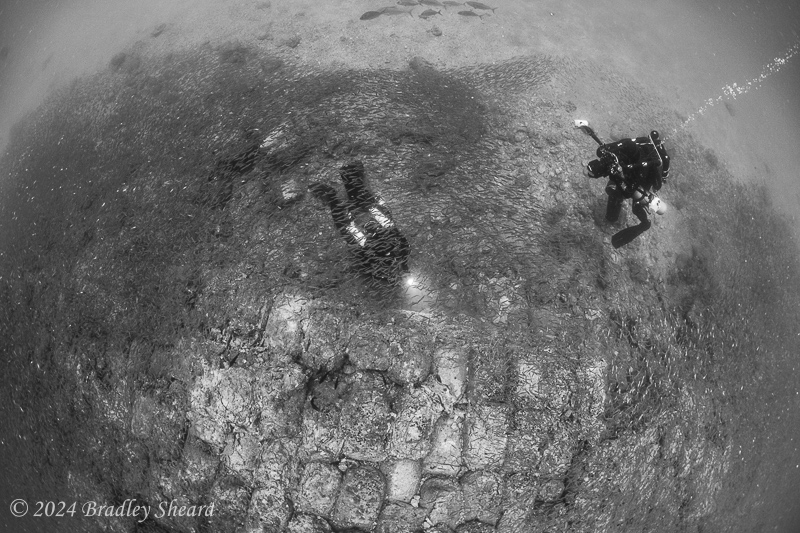 |
|
| The Catherine Monahan was perhaps a typical wooden sailing vessel, but the wreck has a twist. She was apparently carrying a cargo of bagged cement, and after sinking the bags hardened up, and over the years the wooden hull decayed away, leaving a pile of neatly stacked, hardened cement bags in the shape of a ship (above, right). Near the bow sits a pile of anchor chain (above, left), with a school of fish, and even a small moray eel in the upper left. When I first got to the bottom, Marc Corbett (who had tied in the anchor line) motioned to me that he had seen a BIG shark. I made my dive with no sightings, but after I had bundled up my camera and approached the anchor line to make my ascent, there it was! About 20 feet away, and surrounded by an entourage of sandbar sharks, was a small great white shark! (At first I wasn't completely sure if it was a great white or large mako, but the tremendous girth and symmetric, scythe-like tail, beating slowly back and forth, surely made it a great white.) | ||
FW Abrams (sunk in Allied minefield on June 11, 1942)
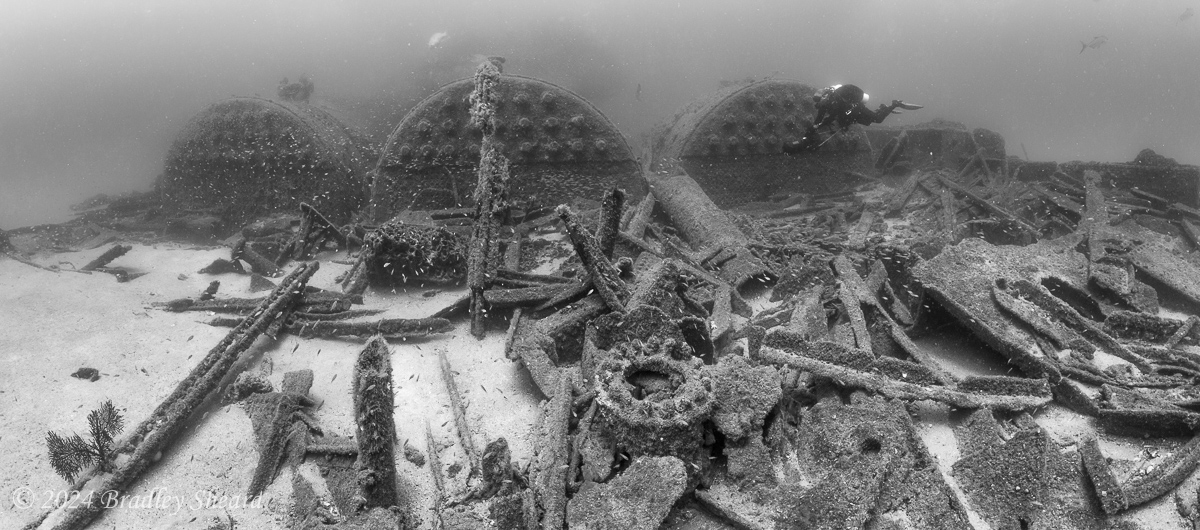 |
|
| |
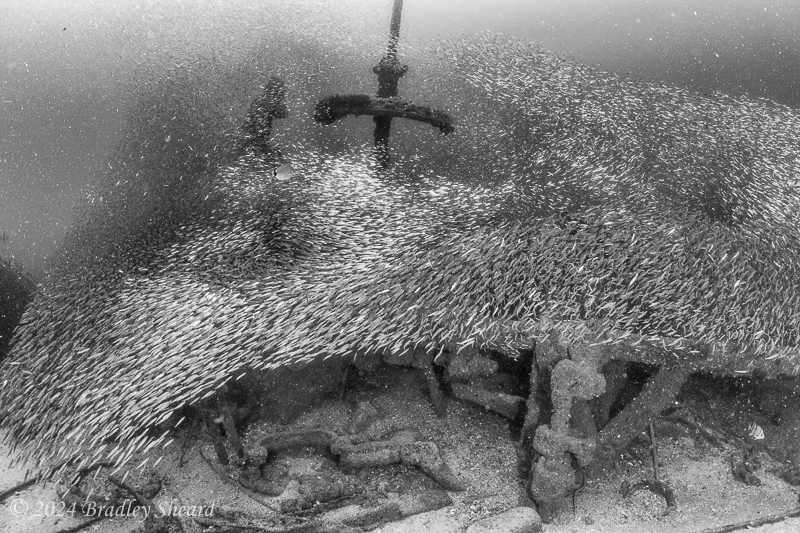 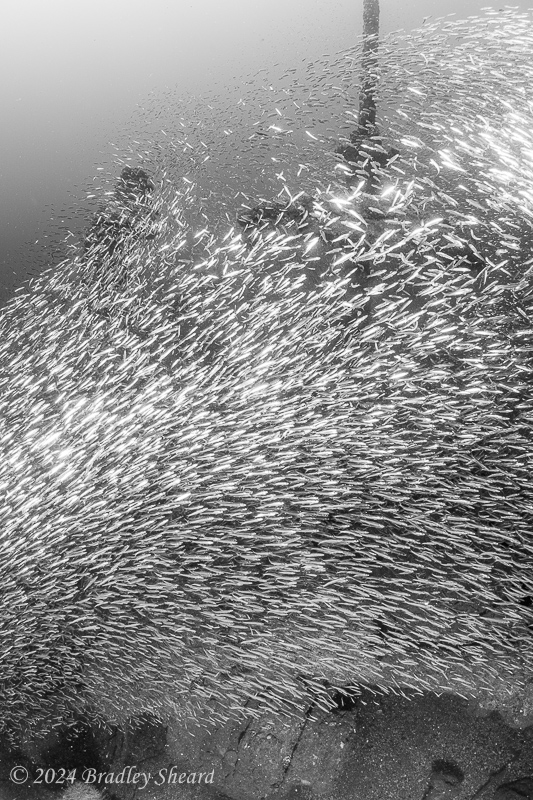 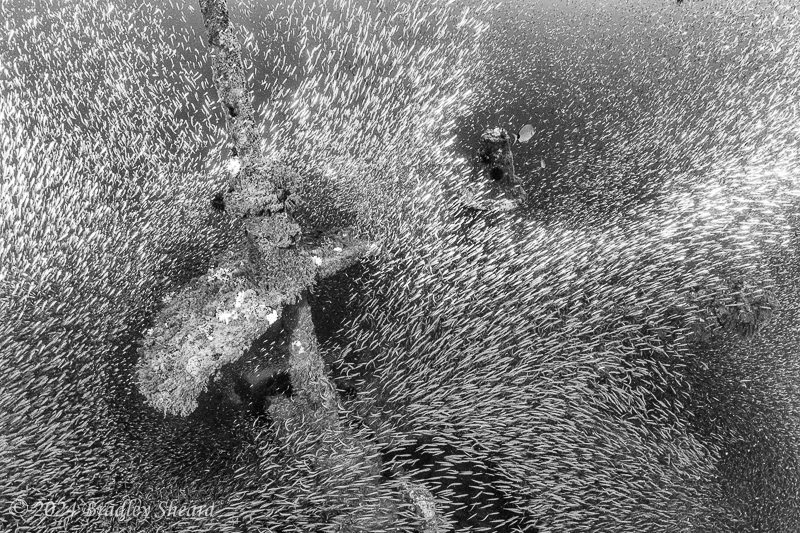 | |
| The FW Abrams was a "friendly-fire" casualty of the same global war as many of the wrecks we dive off Hatteras, as she had a fatal encounter with an Allied minefield. Today she is largley flattened and increasingly buried beneath the shifting sands. The highest part are her three boilers (top), and the remains of her steam engine. The engine was engulfed in a mesmerizing cloud of swarming anchovies that were in constant movement as they surged over and around the engine like a giant bird murmuration (bottom row). |
WE Hutton, aka Papoose (sunk March 18, 1942 by U-124)
All images, text and content Copyright © Bradley Sheard. All rights reserved.